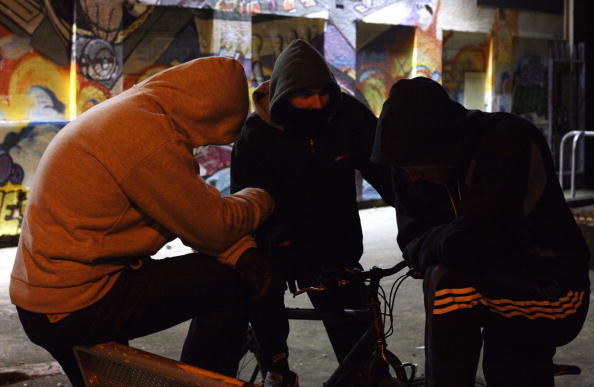Grime isn’t just music - it’s about working-class struggle - and its new middle-class fans need to recognise the genre’s social importance
'The appropriation of working-class culture is a legitimate problem and, therefore, must be treated as such'

2015: said to be the year of the apparent revival of the UK grime and garage scene. Some will argue it never went away. Those of us who have followed the scene throughout the years will understand there is truth in this claim, but not in a straightforward sense of a newfound popularity or worth. 2015 is the year grime artists became university campus legends, their gigs and appearances selling out in days in student-dominated cities such as Leeds, Bristol, and Manchester.
The year began with that Brit Awards performance, when Kanye West was joined by Skepta and other grime artists on stage and, from then on, the scene moved into circles that would have previously expected ‘MC’ to be a probable acronym for a type of medicine or exotic holiday destination.
Grime was pushed to the forefront of British culture, away from the school playgrounds, street corners, and working-class estates that it had previously called home and, finally, music industry heavyweights and journalists began to see grime as a credible addition to British music culture, something to be proud of, a scene to be revered.
However, new fans who emerged from this sudden influx of publicity are where the root of the problem lies. Admittedly, I’m not trying to suggest grime was never supposed to branch out and appeal to a wider sector of society, because music is universal, and all that. But it is central to a way of life, a working-class struggle to get by, created by forerunners like Wiley, Kano, and Dizzee Rascal to give a voice to kids who were otherwise marginalised and silenced by a society that didn’t attempt to get to know them.
The middle-class university students who attend live grime shows now, in 2015, probably don’t even recognise the form of cultural appropriation they’re actively taking part in: wearing a North Face snapback to a rave and singing along to Stormzy probably doesn’t sound out any alarm bells - but it should.
The appropriation of working-class culture - whether that be through grime, slang, or clothing - is a legitimate problem and, therefore, must be treated as such. The issue is personified by these new grime fans: the students who attend these gigs, but actually grew up in suburbia, in comfortable middle-class homes with parents who wouldn’t have dared let their offspring wear tracksuits growing up, who would have shouted in response to ‘thug’ music being played from their rooms.
No, these new fans don’t belong to the demographic grime originally represented: those disillusioned kids on estates who were labelled ‘chavs’ for wearing street clothing, dismissed as ‘uneducated’ for using slang, pushed out of popular music and forced to use pirate radio stations because their sound wasn’t accessible enough, ‘American’ enough.
Now, if these new middle-class fans listen to the music and enjoy it, but don’t recognise its social importance, then they’re missing the point. Grime’s supposed to be rebellious and not easy to listen to. That’s why so many of its most prominent pioneers have been working tirelessly for over a decade to promote their music, often without record labels or contracts. Obviously they deserve recognition for this. I do, however, acknowledge the fact that popularity of their music equals increased sales - which results in revenue - therefore, providing artists with more money to continue on with their work. It’s the popularity of grime in the wider image of working-class appropriation that makes me uncomfortable.
In fashion, we have high-street stores such as Topshop, Asos, and Topman selling Adidas, Ellesse, and Fila, labels that, just a few years ago, would have connoted a certain social class, or being poor, or feral. Through art, we have the ‘Army of Instagram’ that sees no issue in taking #VSCO shots of council estate tower blocks, even though they’re not derelict symbols of an old Britain, but the homes of thousands.
This current trend may be just that, a trend, but for a large sector of society,it remains a way of life. In inner-city areas where grime materialised, this music remains the voice of disillusioned teenagers and young people. That’s why, when middle-class students next attend a Tropical show, wearing a Boy Better Know T-shirt and copious amounts of glitter, they need to keep in mind the importance of the scene they’re taking part in. Why? Because grime isn’t just music. It’s a representation of a lifestyle centred on struggle.
Twitter: @poppierosee
Join our commenting forum
Join thought-provoking conversations, follow other Independent readers and see their replies
Comments